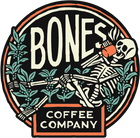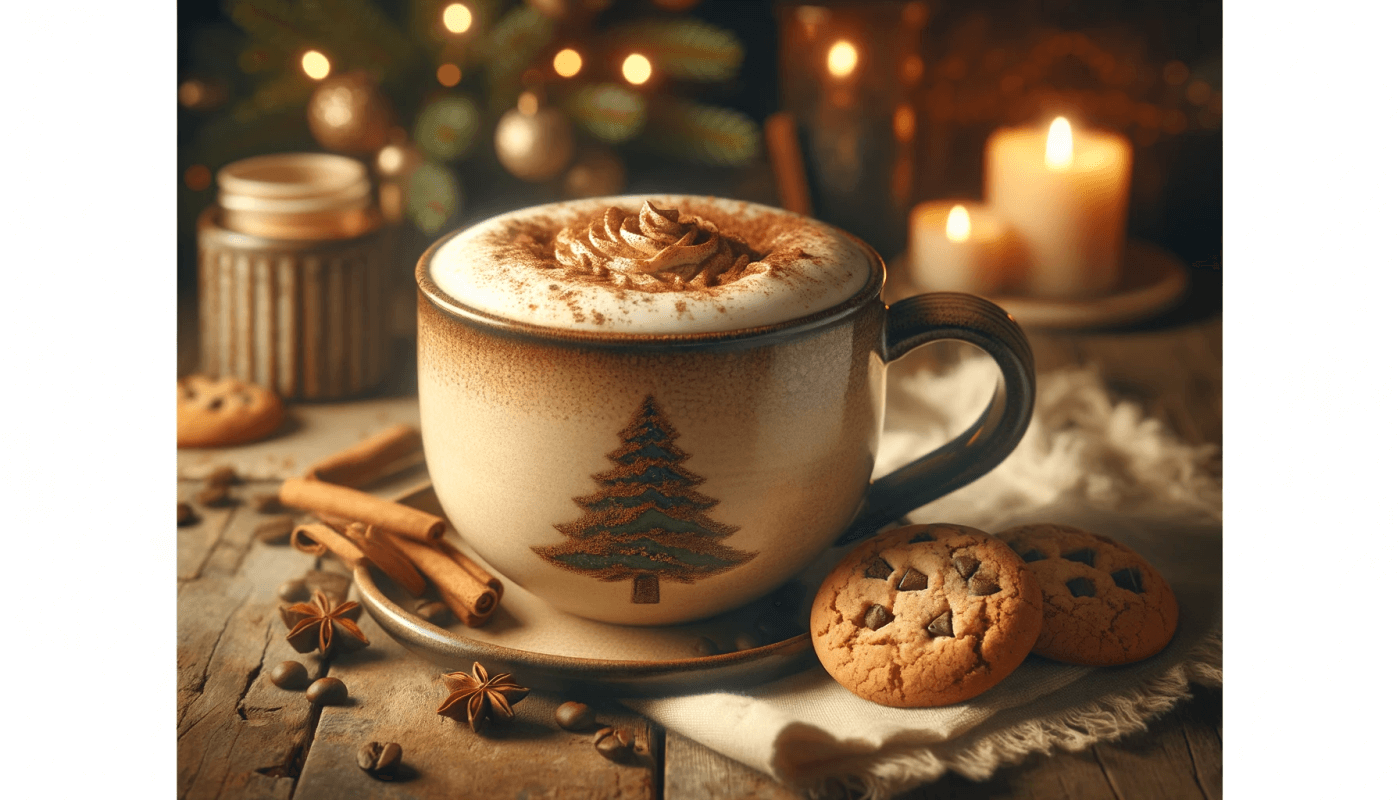Have you ever found yourself craving a refreshing iced coffee, only to be let down by its watered-down taste or overly bitter notes? The secret to bypassing these common coffee conundrums lies not just in the coffee beans you choose but also in mastering how to make cold brew coffee.
Whether you're a seasoned coffee enthusiast or a curious newbie, learning how to make cold-brew coffee at home is a game-changer. It's an invitation to explore the depths of coffee flavors in a simple and deeply satisfying way.
What is Cold Brew Coffee?
Cold brew coffee involves a slow and gentle process of steeping coarsely ground coffee beans in cold water, typically over a period of 12 to 24 hours. The absence of heat in the brewing process means that the bitter compounds often found in hot coffee are not extracted, leaving you with a naturally sweeter, more nuanced flavor.
The magic of cold brew lies in the prolonged extraction process, usually carried out in a simple container like a mason jar. This method of brewing coffee allows the water to slowly draw out the flavors from the coffee grounds, resulting in a concentrate that is remarkably smooth and less acidic than its hot-brewed counterpart.
Did You Know: Cold brewed coffee is easier on your stomach. The low-acid nature of cold brew makes it a great option for coffee lovers with acid sensitivity or stomach issues. |
Choosing Your Coffee and Equipment
Selecting the right coffee and equipment is crucial to perfecting your cold brew coffee recipe. The choice of coffee beans and the grind, along with the brewing equipment, significantly influences the taste and quality of your cold brew concentrate.
Best Coffee Beans for Cold Brew
The type of coffee beans you choose is pivotal in determining the flavor profile of your cold brew. Different beans bring unique flavor profiles, and understanding these differences can help you tailor your cold brew to your taste preferences:
- Arabica Beans: Known for their sweet, soft taste with tones of sugar, fruit, and berries. Their higher acidity brings a winey taste to the cold brew, ideal for those who prefer a lighter, more aromatic flavor.
- Robusta Beans: These beans are stronger, harsher, and more bitter, with grainy or nutty overtones. They contain more caffeine and can add a real punch to your cold brew, perfect for those who prefer a bold, intense flavor.
- Blends: A blend of Arabica and Robusta beans can offer a balance of sweetness and strength. Blends are great for experimenting with flavors and achieving a complex profile in your cold brew.
- Single-Origin Beans: These come from one specific place or region and offer unique flavors that reflect their origin. They are ideal for cold brew enthusiasts looking to explore distinct taste notes.
- Dark Roast Beans: These beans have a bold, robust flavor with a hint of bitterness. They make a rich and strong cold brew concentrate, ideal for coffee lovers who enjoy a hearty brew.
Extra Flavor: Add a pinch of salt to the coffee grounds before brewing to further enrich the taste of your cold brew. This little trick can enhance the natural flavors of the coffee and reduce bitterness, resulting in an even smoother and more enjoyable cup. |
Essential Equipment
If you’re unsure how to make cold brew coffee, you’ll need to start with getting the right tools for the job. While the beans are the star, the right equipment is essential in bringing out their best qualities:
- Mason Jar or Large Pitcher: Essential for steeping the coffee, these containers are ideal for both brewing and storing your cold brew.
- Fine-Mesh Sieve or Coffee Filter: These are used to strain the ground coffee after brewing, ensuring a smooth concentrate without any gritty residue.
- Coffee Grinder: Freshly grinding your beans just before brewing can significantly enhance the flavor of your cold brew. A coarse grind is ideal for cold brewing.
- Measuring Cup or Scale: Precision is key in achieving the perfect coffee-to-water ratio, which is crucial for the ideal strength and flavor of your cold brew coffee concentrate.
With the right beans and simple tools, you’re all set to create a delightful batch of cold brew coffee. The process is forgiving, allowing you to experiment and find your personal preference, whether you like your cold brew light and fruity or strong and bold.
The Cold Brew Process: Step-by-Step
Making cold brew coffee at home is a simple yet rewarding process. You’ll need patience and a bit of precision. Here’s a detailed guide to help you master the art of cold brew.
Grinding the Coffee
The first step in making cold brew coffee is grinding your coffee beans. Unlike the fine grind you might use for making hot coffee, cold brew requires a coarser grind, similar to raw sugar. This coarse grind ensures optimal extraction and prevents your brew from becoming muddy or overly bitter.
Consistency in grind size is key to a smooth, well-balanced cold brew.
The Perfect Ratio
The cold brew coffee ratio is crucial in determining the strength and flavor of your brew. Here’s a comparison table with different ratios:
Coffee to Water Ratio | Strength | Flavor Profile |
1:4 (1 cup coffee to 4 cups water) | Strong | Concentrate |
1:8 (1 cup coffee to 8 cups water) | Medium | |
1:12 (1 cup coffee to 12 cups water) | Light | Mild flavor |
These ratios are a great starting point but feel free to adjust them according to your taste preference.
The Brewing Time
The brewing time is another critical factor in making cold brew coffee. Generally, cold brew should steep for about 12 to 24 hours. The longer you steep, the stronger and more pronounced the flavor.
The 4-step process below works great for a standard batch of cold brew coffee:
- Combine your coffee grounds and water in a large jar or pitcher.
- Cover and let it sit at room temperature or in your refrigerator.
- After steeping, strain the mixture using a fine-mesh sieve or coffee filter to remove the grounds.
- Your cold brew concentrate is now ready to be diluted with water or milk. Enjoy over ice in a cold brew glass or mason jar.
FAQs about Making Cold Brew Coffee
Making cold brew coffee at home can bring up a few questions, especially if you're trying it for the first time. To help you navigate through this process, here are some of the most commonly asked questions:
Q1: Can I use pre-ground coffee for cold brew?
A1: Yes, you can use pre-ground coffee for cold brew. However, for the best results, choose a coarse ground coffee. Fine grounds can make the brew overly bitter and muddy.
Q2: How long can cold brew be stored in the fridge?
A2: Cold brew coffee can be stored in the fridge for up to two weeks. It's important to keep it in an airtight container to maintain freshness and prevent any fridge odors from affecting its taste.
Q3: Is cold brew coffee stronger than regular coffee?
A3: Yes, cold brew coffee is typically stronger than regular hot coffee. This is because cold brew is often made as a concentrate, with a higher ratio of coffee to water. However, it's usually diluted with water or milk when served, which can adjust its strength.
Q4: Can I make a cold brew without special equipment?
A4: Absolutely! To make cold brew coffee, you don't need special equipment. A simple jar, a large bowl, or any container for steeping, and a strainer or a cheesecloth for filtering the ground coffee are sufficient.
Q5: How can I adjust the strength of my cold brew?
A5: To adjust the strength of your cold brew, you can change the coffee-to-water ratio. For a stronger brew, use more coffee grounds; for a lighter brew, use less. You can also dilute the finished cold brew with more water or milk when serving.
Q6: Does the type of cold water used affect the taste of cold brew coffee?
A6: Yes, the type of water can influence the taste of your cold brew. Using filtered or bottled cold water can result in a cleaner and more pronounced flavor profile. Tap water, especially if it's hard or has a distinct taste, can alter the subtle flavors of the coffee.
Q7: How fine should the coffee grounds be for an optimal cold brew coffee recipe?
A7: For a cold brew coffee recipe, it's best to use coarse coffee grounds. A grind that's too fine can lead to over-extraction, making your cold brew bitter and gritty. Coarse grounds allow for a smoother, more balanced extraction, resulting in a better-tasting cold brew.
Q8: Can I reuse coffee grounds to make another batch of cold brew?
A8: It's not recommended to reuse coffee grounds to make another batch of cold brew. The first brew extracts most of the flavor and caffeine from the grounds, so a second brew would likely be weak and underwhelming in taste. For the best quality and flavor, always use fresh coffee grounds for each batch.
Sustainability Tip: After brewing your cold brew, don’t throw away the used coffee grounds! They can be repurposed in your garden as a natural fertilizer or used as an exfoliating body scrub. |
Unlocking the Secrets of Homemade Cold Brew
Now that you’ve learned how to make cold brew coffee, you’ll be more open to the different flavor profiles your morning cup of joe has to offer. The world of cold brew coffee offers a delightful, rich experience that's both enjoyable and surprisingly easy to achieve.
With just a mason jar and a few simple ingredients, you can create a brew that rivals any iced coffee at your favorite coffee shop. The process, from selecting the right beans to mastering the perfect brewing ratio, is a rewarding exploration into the depths of coffee flavors.
To ensure your cold brew journey starts with the best, don't forget to check out our 12oz bags collection at Bones Coffee Company. Each coffee product is crafted to enhance your brewing experience! Order now!







